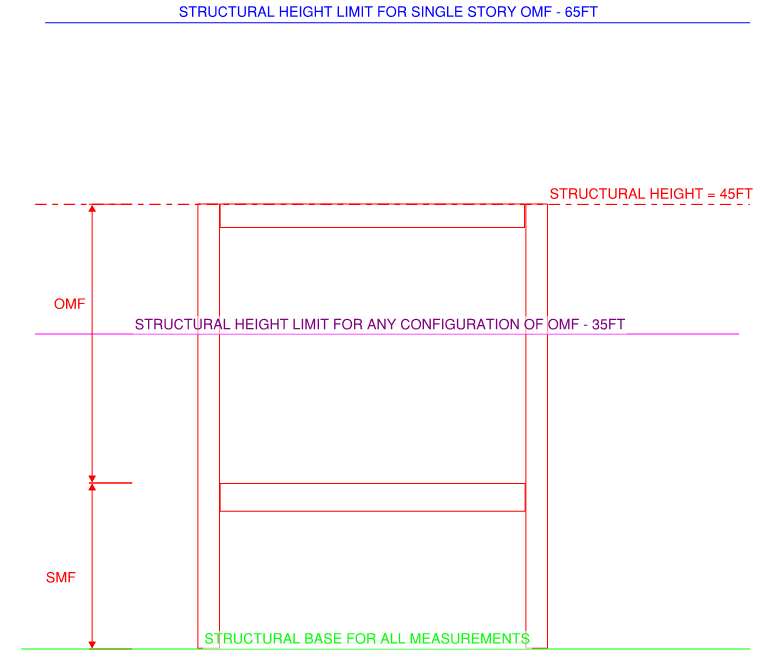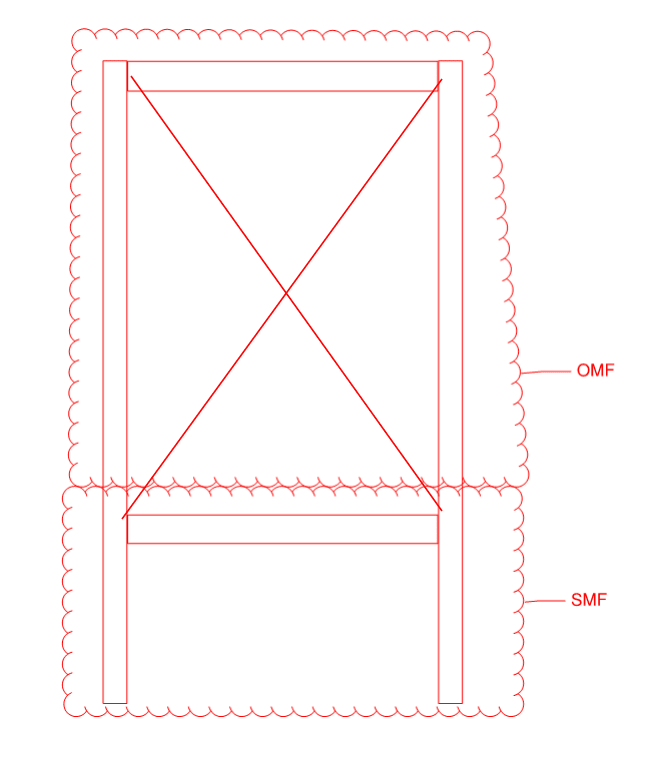YoungGunner
Structural
BTW, I'm not looking for solutions or alternative ideas - simply asking if this logic checks out.
The height of the frame is around 45ft. It exceeds the 35ft limit for a multi-story steel frame for OMF. It would change the architectural look of the designer's ceiling to do a SMF all the way up and deal with bottom flange bracing on the top beam at the roof. We want to avoid Simpson's specialty product that doesn't require bottom flange bracing. So, can we do an OMF on a SMF (we can do bracing at the floor level easily) that share the same columns? Obviously the R of 3.5 tracks into the SMF, but the goal here is to fall underneath the provision of a 65ft single story OMF by having it stack on an SMF, and avoid bracing on the top beam. Does this logic check out?

The height of the frame is around 45ft. It exceeds the 35ft limit for a multi-story steel frame for OMF. It would change the architectural look of the designer's ceiling to do a SMF all the way up and deal with bottom flange bracing on the top beam at the roof. We want to avoid Simpson's specialty product that doesn't require bottom flange bracing. So, can we do an OMF on a SMF (we can do bracing at the floor level easily) that share the same columns? Obviously the R of 3.5 tracks into the SMF, but the goal here is to fall underneath the provision of a 65ft single story OMF by having it stack on an SMF, and avoid bracing on the top beam. Does this logic check out?




